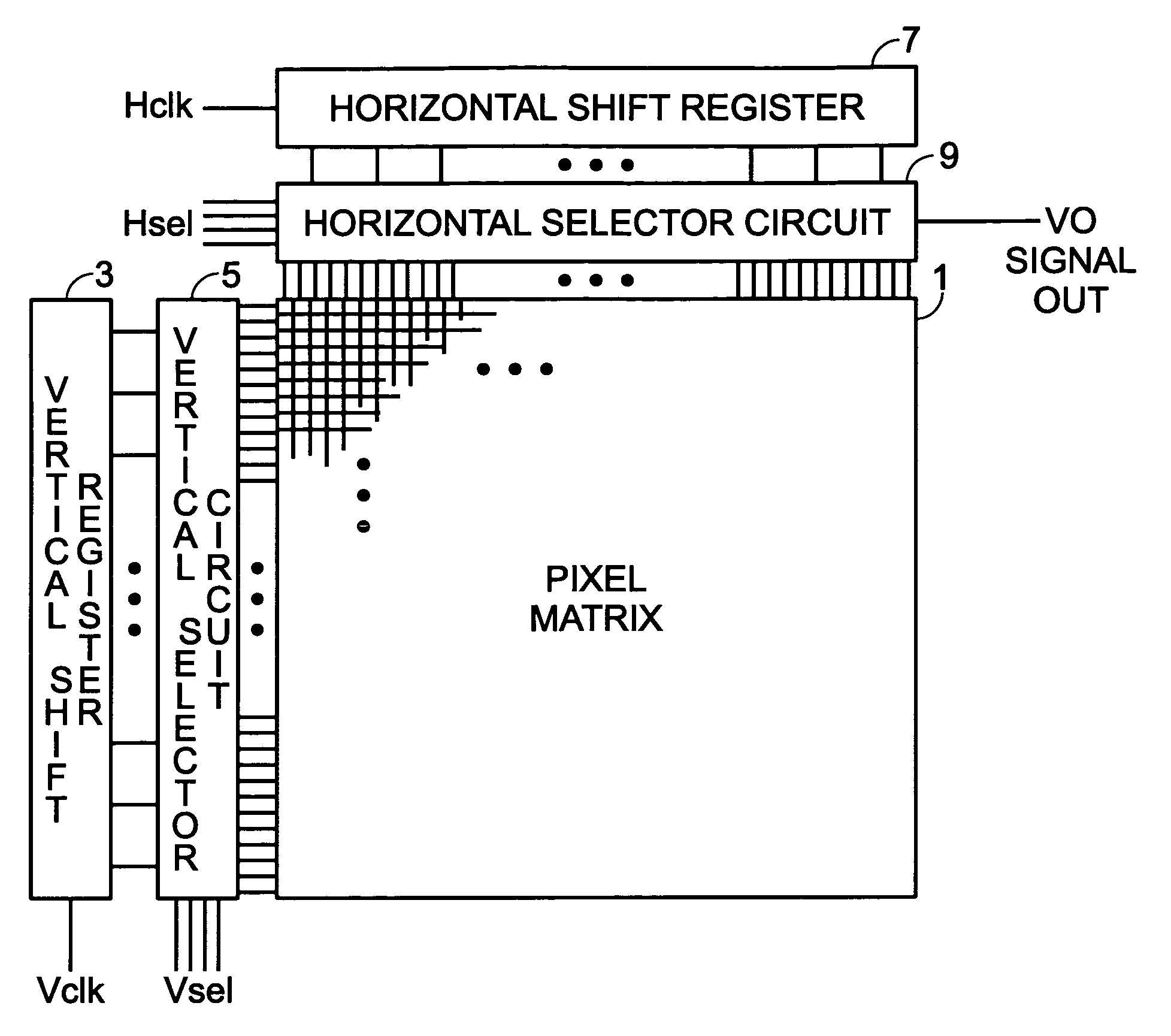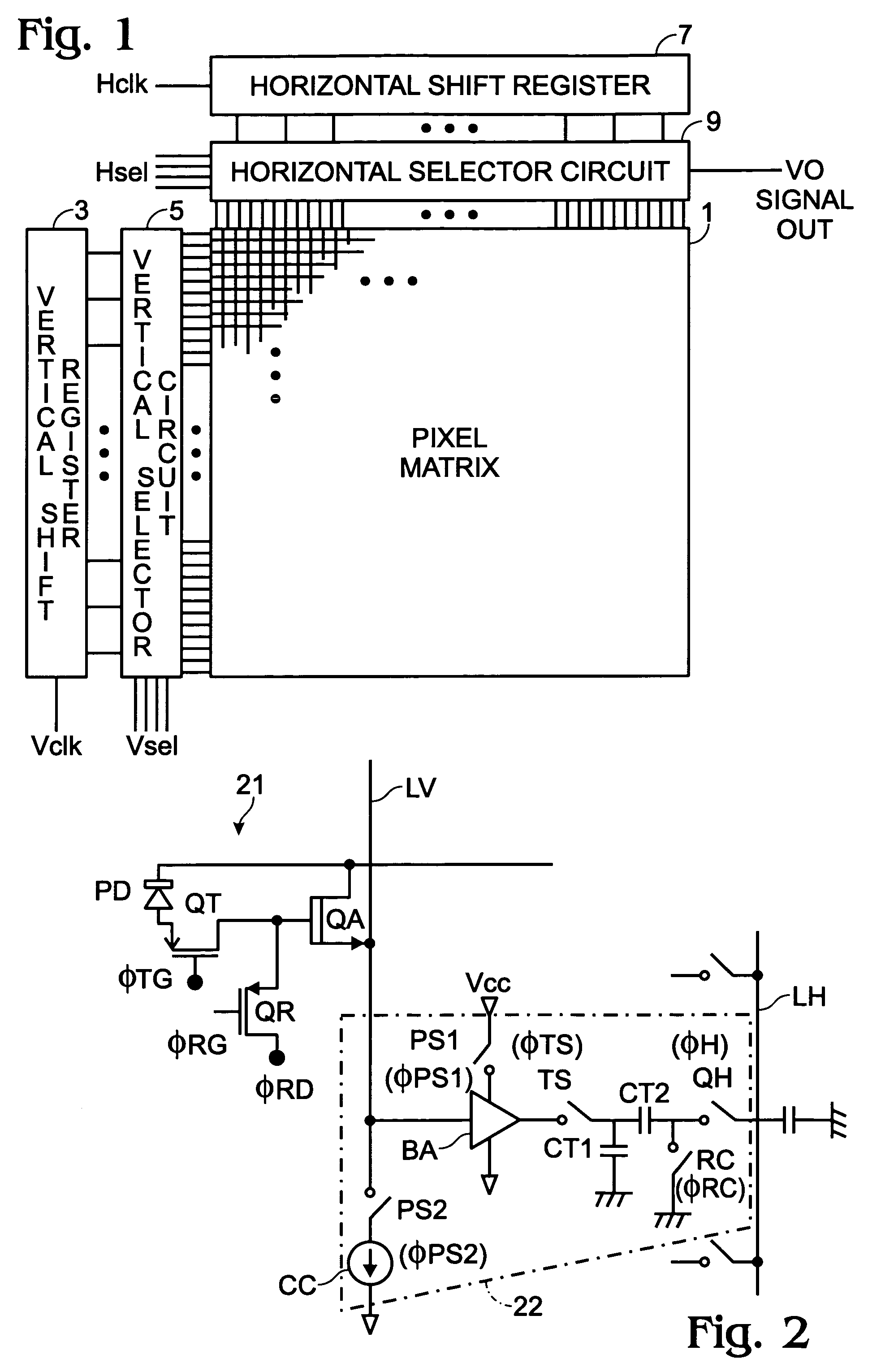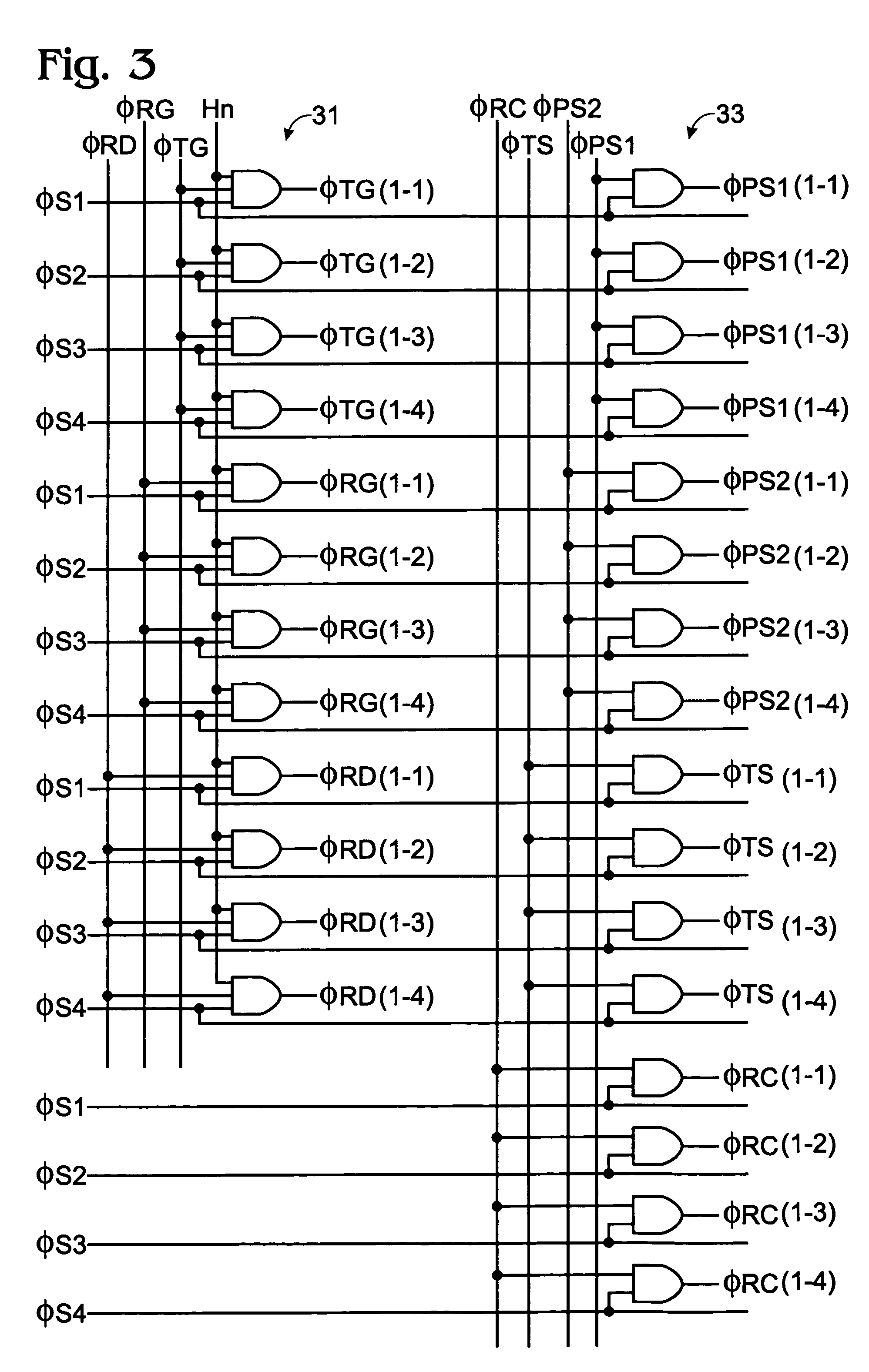Electronic camera and solid-state camera element that provides a reduced pixel set
a camera element and camera device technology, applied in the field of electronic cameras and solid-state camera devices, can solve the problems of consuming a lot of power, affecting the efficiency of the camera device, and the number of pixels in the camera device and the display element differ, so as to reduce the pixel set, improve the efficiency of the camera device, and improve the effect of speed
- Summary
- Abstract
- Description
- Claims
- Application Information
AI Technical Summary
Benefits of technology
Problems solved by technology
Method used
Image
Examples
Embodiment Construction
)
[0026]Before explaining modes of embodiment of this invention, a prior art BCAST system solid-state camera device is explained in summary by reference to FIG. 8. For purposes of explanation, the solid-state camera device of FIG. 8 has four pixels Q(1,1), Q(1,2), Q(2,1), and Q(2,2) arranged in a matrix of two rows and two columns. Each pixel is comprised of photodiode PDij that is a photoelectric conversion element, an amplifier element QAij (comprised, for example, of a junction type field effect transistor (JFET)), a transfer element QTij (exemplarily comprised of a MOSFET) that transfers the charge of the photodiode PD to the gate of amplifier element QAij, and a switch element QRij (exemplarily comprised of a MOSFET) for presetting the gate electrode of amplifier element QAij. The letters i and j correspond to the row and column numbers, respectively.
[0027]In addition, transfer control switch TSj and capacitor CT2j are connected in series between vertical reading line LVj and ho...
PUM
 Login to View More
Login to View More Abstract
Description
Claims
Application Information
 Login to View More
Login to View More - R&D
- Intellectual Property
- Life Sciences
- Materials
- Tech Scout
- Unparalleled Data Quality
- Higher Quality Content
- 60% Fewer Hallucinations
Browse by: Latest US Patents, China's latest patents, Technical Efficacy Thesaurus, Application Domain, Technology Topic, Popular Technical Reports.
© 2025 PatSnap. All rights reserved.Legal|Privacy policy|Modern Slavery Act Transparency Statement|Sitemap|About US| Contact US: help@patsnap.com



